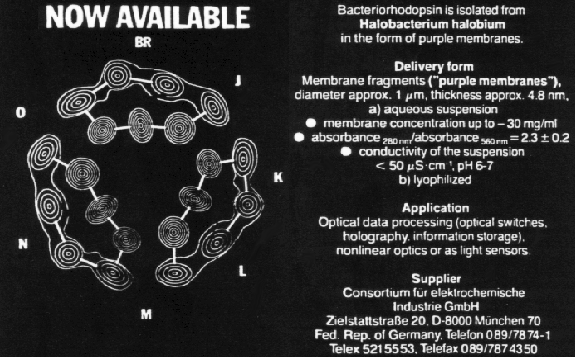
As an example of current work, consider the molecular optical memory research underway by Prof. Robert Birge and his group at Syracuse University. Using the purple membrane from the bacterium Halobacterium Halobium, they've made a working optical bistable switch, fabricated in a monolayer by self-assembly, that reliably stores data with 10,000 molecules per bit. The molecule switches in 500 femtoseconds--that's 1/2000 of a nanosecond, and the actual speed of the memory is currently limited by how fast you can steer a laser beam to the correct spot on the memory.

Lest you think this is some far out distant future research topic, here's an ad from a couple weeks ago by a company in West Germany offering bacteriorhodopsin for sale, listing under applications, ``Optical data processing, optical switches, holography, information processing, nonlinear optics, and light sensors.''